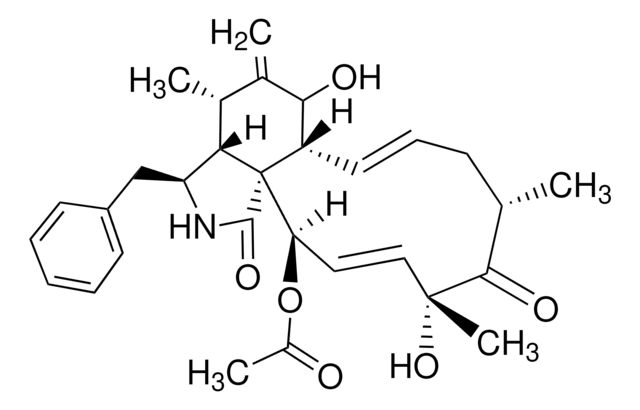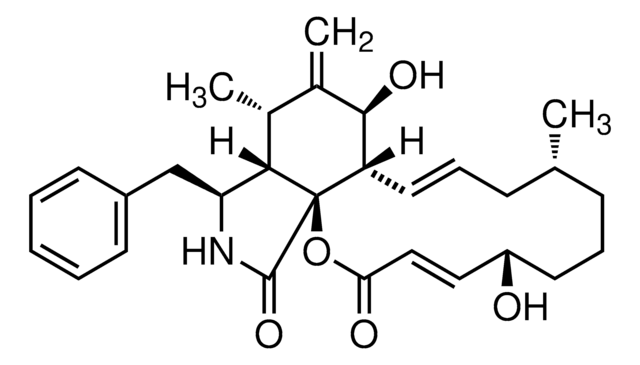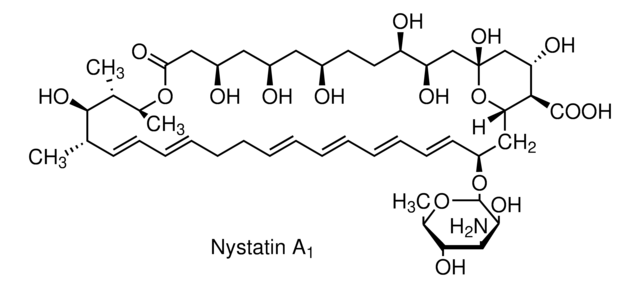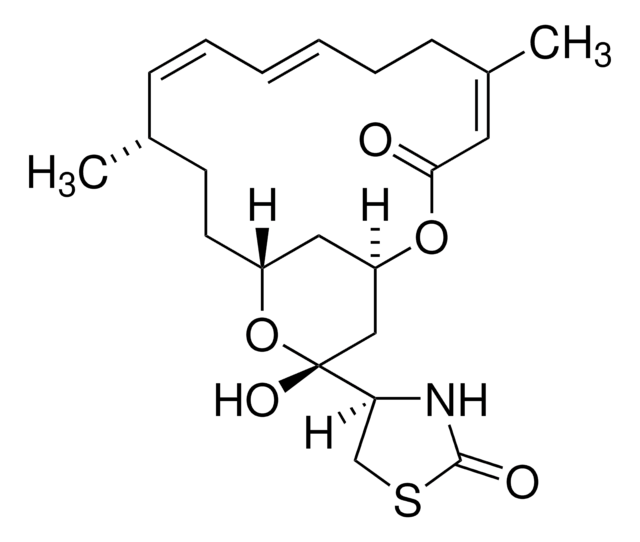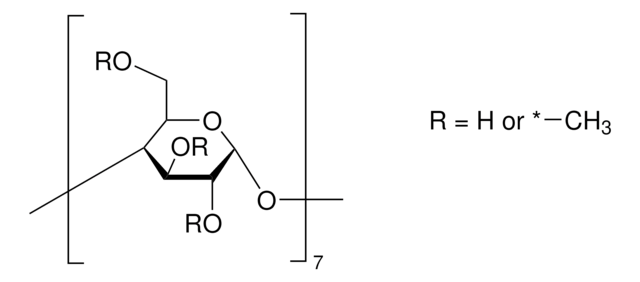250255-M
Cytochalasin D
from Zygosporium mansonii, ≥98% (TLC), solid, fungal toxin, Calbiochem®
Synonym(s):
Cytochalasin D, Zygosporium mansonii
About This Item
Recommended Products
Product Name
Cytochalasin D, Zygosporium mansonii, Cytochalasin D, Zygosporium mansonii, CAS 22144-77-0, is a fungal toxin that is about 10-fold more potent than cytochalasin B in inhibiting actin filament function. Blocks cytoplasmic division.
Quality Level
Assay
≥98% (TLC)
form
solid
manufacturer/tradename
Calbiochem®
storage condition
OK to freeze
protect from light
color
white
solubility
DMSO: 2 mg/mL
chloroform: 2 mg/mL
storage temp.
−20°C
InChI
1S/C30H37NO6/c1-17-10-9-13-22-26(33)19(3)18(2)25-23(16-21-11-7-6-8-12-21)31-28(35)30(22,25)24(37-20(4)32)14-15-29(5,36)27(17)34/h6-9,11-15,17-18,22-26,33,36H,3,10,16H2,1-2,4-5H3,(H,31,35)/b13-9+,15-14+/t17-,18+,22-,23-,24+,25-,26+,29+,30+/m0/s1
InChI key
SDZRWUKZFQQKKV-JHADDHBZSA-N
General description
Biochem/physiol Actions
Actin filament function
Warning
Reconstitution
Other Notes
Blankson, H., et al. 1995. Exp. Cell Res.218, 522.
Melamed, I., et al. 1995. Biochem. Biophys. Res. Commun.209, 1102.
Verschueren, H., et al. 1995. Eur. J. Cell Biol.66, 335.
Aszalos, A., et al. 1994. Cell Immunol. 157, 81.
Wang, W.H., et al. 1994. Am. J. Physiol. 267, F592.
Betina, V., and Micekova, D. 1972. Chem. Abstr.77, 160508q.
Katagiri, K., and Matsuura, S. 1971. J. Antibiot. 24, 722.
Legal Information
Signal Word
Danger
Hazard Statements
Precautionary Statements
Hazard Classifications
Acute Tox. 2 Oral
Storage Class Code
6.1A - Combustible acute toxic Cat. 1 and 2 / very toxic hazardous materials
WGK
WGK 3
Certificates of Analysis (COA)
Search for Certificates of Analysis (COA) by entering the products Lot/Batch Number. Lot and Batch Numbers can be found on a product’s label following the words ‘Lot’ or ‘Batch’.
Already Own This Product?
Find documentation for the products that you have recently purchased in the Document Library.
Customers Also Viewed
Our team of scientists has experience in all areas of research including Life Science, Material Science, Chemical Synthesis, Chromatography, Analytical and many others.
Contact Technical Service